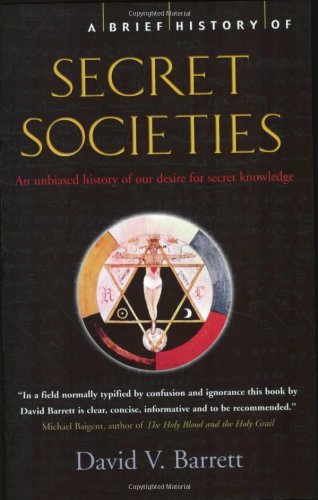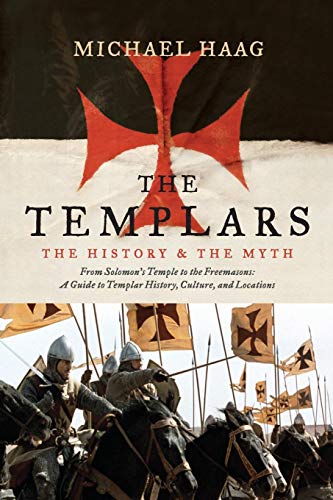Few organizations have captured the world’s collective imagination like the Knights Templar. Certainly, no other group has such a dual image of pious devotion and absolute heresy. They served the poor and the pilgrims. They amassed a huge fortune and all but invented banking. They were put on trial and purged. A lot of fascinating mysteries surrounding the Templars walk the strange line between legend and history.
10 The List Of 12 Who Escaped
Templars were famously burned at the stake after being convicted of heresy in the beginning of the 14th century, rounded up and slaughtered wholesale. Less popularly known is the story of the French Templars who escaped. Even the Templar organization as it exists today isn’t sure what the whole story was.
 Secret Societies: Insi...
Best Price: $2.10
Buy New $7.00
(as of 05:55 UTC - Details)
Secret Societies: Insi...
Best Price: $2.10
Buy New $7.00
(as of 05:55 UTC - Details)
According to the popular story, all the Templars were arrested on Friday the 13th, in October 1307. But it’s also been speculated that some escaped persecution. Estimates of numbers in the order at the time are somewhere around 3,000, but we only have records of the interrogations—and the fate—of about 600 of them. The rest? No idea.
If a massive, coordinated, country-wide series of arrests would have been impossible, many Templars had a chance to get out. Records tell of authorities pursuing some of the escaped knights, and one document in particular has been languishing in French archives for centuries. Only proved authentic recently after handwriting comparison, the document is a list of 12 names that were of particular interest to authorities.
Historians have identified a couple of these names and connected them with the reasons they were of such great interest. Humbert Blanc was a Crusader and master of Auvergne; he was captured and put on trial in 1308, denying all charges (save the secrecy of the order, which he thought unnecessary). Records say he was put in irons, but we’re not sure what happens to him afterward. A couple other names on the list—Renaud de la Folie and Pierre de Boucle—crop up again in trial records, but it’s difficult to tell why they were so important. The spelling of names is less than consistent, making it hard to connect names and deeds.
As for the others on the list, just why they were special targets of the authorities above others is a mystery. One, Guillaume de Lins, even has a question mark next to his name on the list. He’s perhaps Gillierm de Lurs, one of the officers in charge of ceremonies and receptions, but again, spelling gets in the way of establishing anything for sure. We don’t know much about Hugues Daray,
 A Brief History of Sec...
Best Price: $3.89
Buy New $23.61
(as of 09:15 UTC - Details)
either, or Adam de Valencourt, save that he was an elderly man who had, for some reason, joined the Templars twice.
A Brief History of Sec...
Best Price: $3.89
Buy New $23.61
(as of 09:15 UTC - Details)
either, or Adam de Valencourt, save that he was an elderly man who had, for some reason, joined the Templars twice.
9 Debt, An Assassination Plot, And The Arrests
Also on the list of 12 is one man that we know just enough about to raise a whole bunch of other questions—Hugues de Chalon. De Chalon was put on trial after the arrests, but his name shows up in some pretty strange places even before that. A high-ranking officer in Champagne, he met with the pope in 1302 despite orders from the king that they weren’t to respond to the papal summons. History tells us what usually happens to people who disobey the king.
He’s also mentioned in another document associated with Heinrich Finke, the historian who discovered the list. That document refers to a plot to kill the king, supposedly hatched by de Chalon and a handful of unnamed others from the same sect within the Templars. But just what any of it refers to is unknown. We’re not sure what this plot was, if it even existed.
Also mentioned in the document is another name, Gerard de Montclair, and we’re not entirely sure who he is, either. The closest name historians have found in other records is Richard de Montclair from Cyprus, but no one’s been able to connect the two.
A plot to kill the king of France wouldn’t have been entirely out of the question. Philip IV was massively in debt, and he had already been doing quite a bit of creative requisitioning to try to alleviate that debt—some of which had been accumulated before he even took the throne. For starters, he began randomly declaring entire communities heretical and seizing their assets for the crown. He’d already targeted the Jewish community and several Lombard merchants. When that wasn’t enough to finance his campaigns to expand France’s territory, he turned to debasing the French currency at a rate of about two-thirds.
 Secrets of the Knights...
Best Price: $6.31
Buy New $22.48
(as of 07:00 UTC - Details)
Secrets of the Knights...
Best Price: $6.31
Buy New $22.48
(as of 07:00 UTC - Details)
The Templars’ actions somewhat overshadows the rest of the populace’s rioting in protest of the currency adjustment. The riot’s supposed leaders were hanged in the streets as examples. Armed forces were then called in. That was right before the arrests of the Templars. It’s never been proven entirely that their arrests were a money grab, but it seems a likely conclusion.
8 What Was The Head Of The Templars?
According to accusations, the Templars had an idol in their possession, a head. While most Templars denied knowing anything about the worship of a head, William of Arreblay claimed to have seen a ceremony in Paris where a silver head sat on an altar at the center of adoration. It was supposedly the head of Saint Ursula—the saint and her 11,000 virgins were reported to have remained faithful in the face of death and torture and were venerated by the Templars for it.
If that’s not unsettling enough, he also stated that the head had two faces. Other descriptions of the head were interpreted as being the head of Baphomet, while others said it was either wood, black and white, or metal.
The idea of the worship of an idol or head of Baphomet is one of the most popularly associated with the accusations presented at the Templar trials, but mention of the name in particular isn’t in any of the official arrest warrants. Supposedly, a version of the name Mahomed was, at some point assigned to the idols.
 The Templars: The Hist...
Best Price: $2.00
Buy New $7.00
(as of 07:40 UTC - Details)
The Templars: The Hist...
Best Price: $2.00
Buy New $7.00
(as of 07:40 UTC - Details)
When things were going all sideways for the Templars, a head was supposedly recovered from their Paris temple. It was said to be a skull covered in silver, wrapped in linen, and labeled “Number 58.” Perhaps one of the 11,000 virgins William of Arreblay described?
It would be easy to dismiss the idea of the mysterious Templar head if the only mentions of it were around the accusations from those trying to brand them as heretics. But other historical accounts indicate that they did have a head, supposedly belonging to Saint Euphemia of Chalcedon.
The Greek orthodox saint was martyred by Emperor Diocletian and was thought to have particular powers against, ironically, heretics. Templar records indicate that during the Fourth Crusade, relics from the saint fell into their possession in Constantinople and were taken to Cyprus. The relic is pretty well recorded and can be traced through the Hospital of St. John and Rhodes, finally ending up in Malta as late as the early 17th century. The Templars used the presence of the skull, which they believed they had received by the grace of God, as evidence that they weren’t a heretical organization.
However, the body of Saint Euphemia rests in the church of St. George in Constantinople, and it’s intact.





